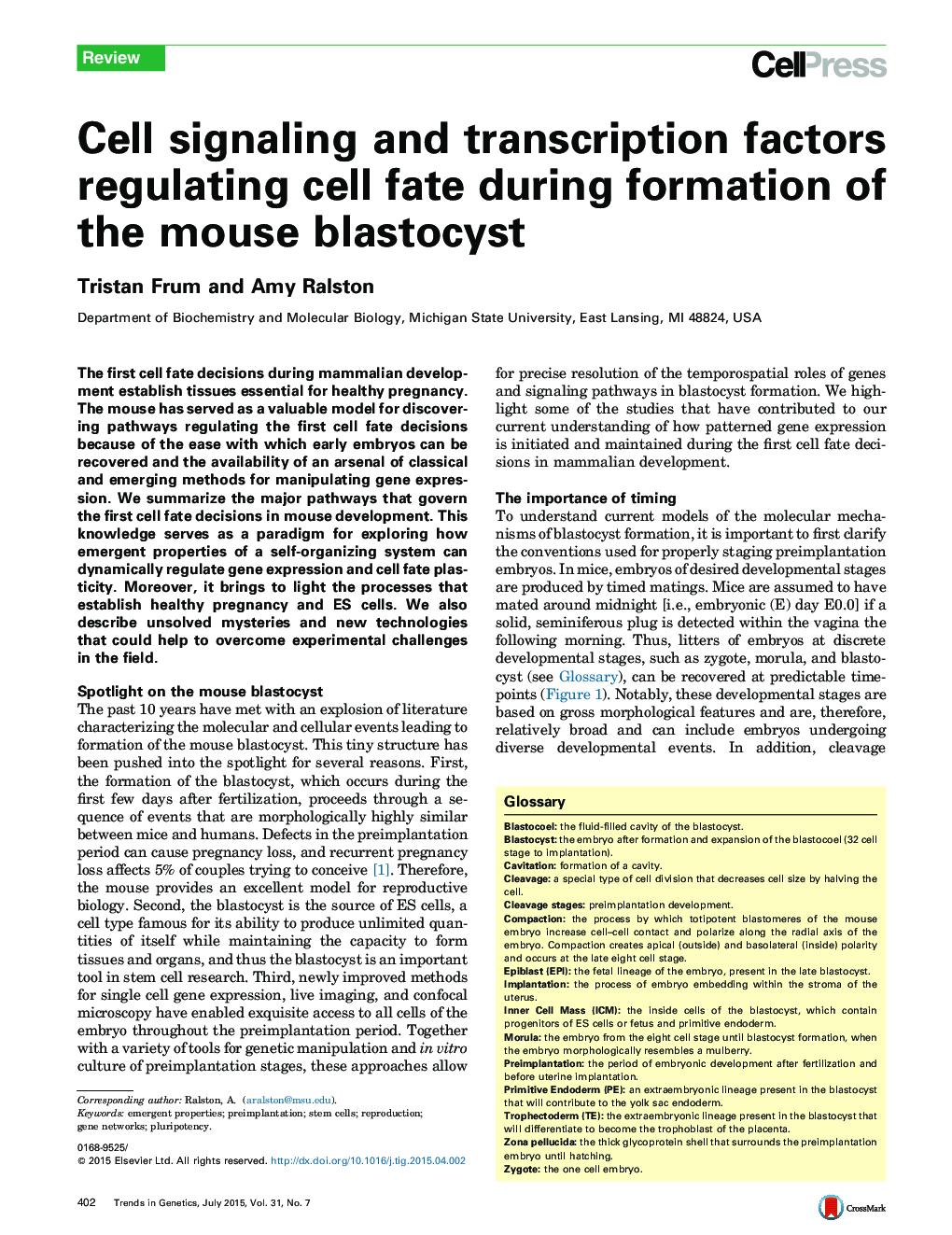| Article ID | Journal | Published Year | Pages | File Type |
|---|---|---|---|---|
| 2824708 | Trends in Genetics | 2015 | 9 Pages |
•The first two cell fate decisions in mammalian development create ES cell progenitors and two extraembryonic cell types that are essential for fetal development.•During blastocyst formation, cell fates are initially specified by cell signaling, and are then reinforced by lineage-specific transcription factors.•Technological advances in imaging and gene expression analysis enable new insights into the mechanisms of cell fate specification in the mouse early embryo.
The first cell fate decisions during mammalian development establish tissues essential for healthy pregnancy. The mouse has served as a valuable model for discovering pathways regulating the first cell fate decisions because of the ease with which early embryos can be recovered and the availability of an arsenal of classical and emerging methods for manipulating gene expression. We summarize the major pathways that govern the first cell fate decisions in mouse development. This knowledge serves as a paradigm for exploring how emergent properties of a self-organizing system can dynamically regulate gene expression and cell fate plasticity. Moreover, it brings to light the processes that establish healthy pregnancy and ES cells. We also describe unsolved mysteries and new technologies that could help to overcome experimental challenges in the field.
